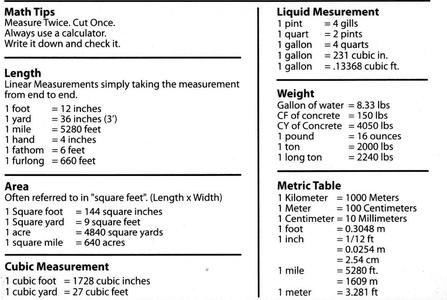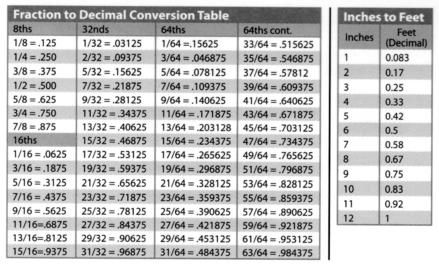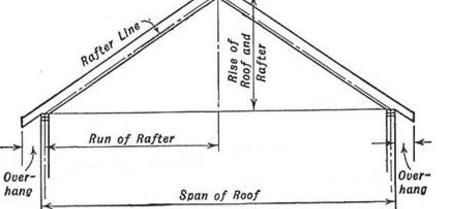
Quick Contractors Math Tips
Don't make costly mistakes in your math!
Follow this simple tips.
Always Use a Calculator
NEVER add anything in your head. And always double check to make sure you get the same answer.
Write it Down
Write it down so that you can go back and check it. When it comes to money, no math is to simple.
Always Multiply in Numbers
Convert feet & inches into decimals.
Never round quantities until the end
For example if you are figuring out materials for a roof replacement and you arrive at 20.3 squares, don't just round up to 21. First multiply by the number of bundles per square.
Graph Paper
Always keep graph paper handy for complex calculations.
Important Measurements (DIY & Pros)
Tape Measures indicate whole numbers in inches and fractions of an inch in increments of 1/16"

- The first step to adding or subtracting fractions is reducing the fractions to their lowest possible terms.
- Find the lowest common denominator for each figure.
- To convert to the lowest common denominator, find the lowest common multiple. This will be the lowest number that can be divided equally by each
Important Conversions Fraction to Decimal
- Numerator is the top number.
- Denominator is the bottom number.
- Take the "top" number and divide it by the bottom number

Markup vs. Gross Profit

Markup and gross profit are often mixed up. Markup is the factor you apply to your estimated job cost to decide what your customers cost will be.
For Example: You estimate the cost to do a job is $1000,000 and you want to mark it up 30%. You determine the contract you will agree to will be in the amount of $130K.
Did you really make 30%? No. Gross profit is computed by subtracting the cost of sales (Material, labor, tools etc.) from your contract price. The "profit" percentage is equal to gross profit divided by the contract price.
130K Divided by 30K = .23 (23%)
Use This Menu to Locate More Tips for Everyday Math
- Calculating for Contractors (Estimating Tips, Mark up & Gross Profit)
- Calculating Area & Volume for Geometric Shapes
- Calculating & Estimating Concrete Slabs & Masonry Blocks
- Calculating Brick, Concrete, Footers and Mortar
- Calculating Paint & Wallpaper
- Calculating Roofs & Gables (Waste Factors, Felt, Shingles, Nails, Etc.)
- Calculating Wall Studs, Drywall, Ready Mix, Tape, Joint Compound, Nails & Screws
- Calculating Wall Tile & Floor Tile
- Calculating Stairs, Stair Runs, Risers & Stair Terminology
- Calculating Slopes, Soil, Fill Material, Excavation Tips & Color Code for Underground Lines